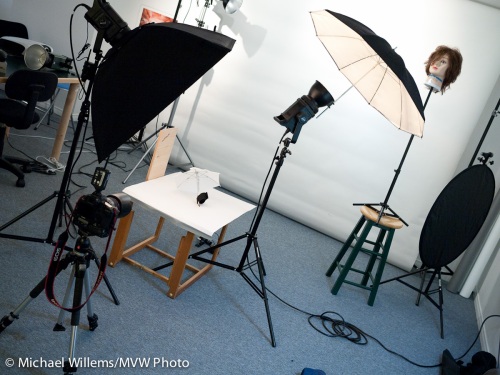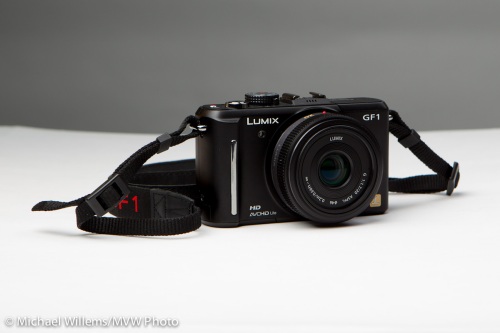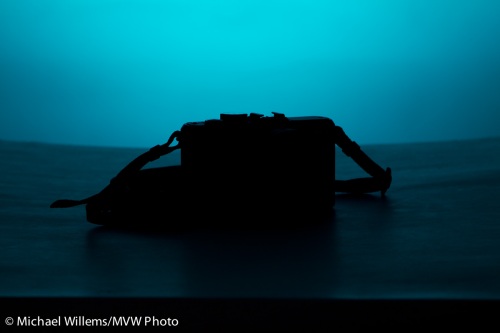Two studio/product lighting tips for you, prompted by me shooting a few product shots just now for upcoming reviews. Shots like this:
That was taken here:
Which, when seen from behind, looks like this:
So what are the tips?
First, avoid stray light, especially on your background. Saturation means “how little white light is mixed in”. A saturated colour has no white mixed in. An unsaturated colour has much white mixed in.
So use a grey backdrop if you can, or just use distance and directional light. Of course since I am using an umbrella and a softbox, much light will stray. So I keep the background far away (you all remember the inverse square law).
So, not this:
But more like this.
Then set your camera to what you like (f/9 and 1/125th for me), and get the background right.
First take a picture with no flash, to ensure that is black; then shoot while activating the background light only. Now get the flash power right: too little and you get a dark background; too much and it turns white. For me, I found this about right:
Then you get the rest right, i.e. set the right power for your main lights, and finally, shoot the shot.
Second tip: always use a brush or compressed air to clean your product. Otherwise, hours of photoshopping will result.







As always, I dig your insight and detailed perspective. Great tip and very useful. What’s with the little white umbrella? It can see it returns the results, but where did you pick that up / find a white umbrella that is so small?
Ah… Sttobella, see tomorrow’s micro-review 🙂
Ah… Strobella, see tomorrow’s micro-review 🙂
Wow…………that’s a lot of light for a little camera..:) Thanks for this diagram. Quick question, will this work with a white background? I tried a white background shot recently and it was super blown out.
Sure. My background is white, as you can see. All you need is enough distance between the object and that background. A white background plus zero light = a black background!
Hmmmm…………..thanks Michael.